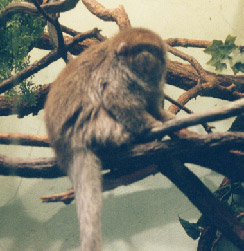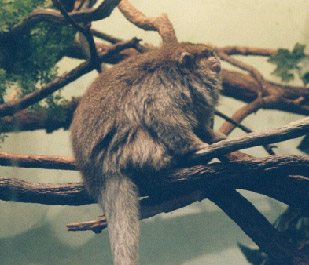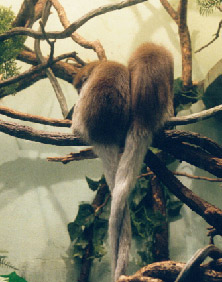The average body mass for both the male and female dusky titi is about 1 kilogram. The canines are sexually monomorphic for this species (Kinzey, 1972). the of this New World species is non-prehensile (Hershkovitz, 1988). The dental formula for this species is 2:1:3:3 on both the upper and lower jaws (Ankel-Simons, 2000). This species has a pelage coloration that is buffy or grayish agouti to pale brown agouti on the dorsal side of the head, trunk, and limbs (Hershkovitz, 1990). The ventral side, inner side of the limbs, and the sideburns of the face are orange in color (Hershkovitz, 1990). The tail is colored blackish agouti terminally and orange or buffy basally (Hershkovitz, 1990).
RANGE:
The dusky titi is found in the country of Brazil in the states of Para, Mato Grosso, and parts of Amazonas and Rondonia (Hershkovitz, 1990). In the state of Para this species is found from the west bank of the Tocantins-Araguaia River west to the east bank of the Tapajos River, and south to the headwaters of the Araguaia, Xingu, and Tapajos in the state of Mato Grosso (Hershkovitz, 1990). The range of the dusky titi also extends to the Jiparana and Madeira Rivers (Ferrari and Lopes, 1992). This species lives in forests in swamps and allow river and lake edges in the lower canopy (Kinzey, 1981).
ECOLOGY:
The dusky titi is primarily a frugivorous species, but also eats leaves and insects. The dusky titi has also been known to eat bamboo shoots (Fleagle, 1988). This species feeds in small groups, and groups will feed on the same food at the same time (Kinzey, 1981). The dusky titi begins feeding in the early morning before taking about an hour rest during mid-day (Kinzey, 1981). This species is diurnal and arboreal and rarely comes to the forest floor (Kinzey, 1997).


